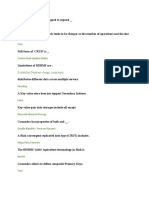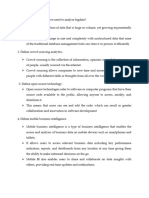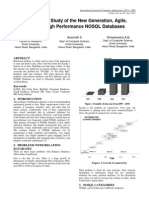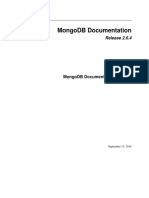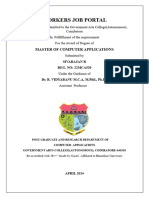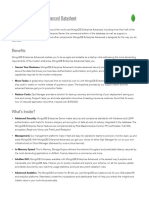0% found this document useful (0 votes)
252 views5 pagesNoSQL Quiz Answers
The document contains a set of quiz questions and answers related to NoSQL databases, covering topics such as the differences between relational and NoSQL databases, data distribution methods, and specific features of document and graph databases. Key concepts include sharding, replication, map-reduce, and the characteristics of various NoSQL database types. The quiz aims to test knowledge on the advantages and limitations of NoSQL databases compared to traditional relational databases.
Uploaded by
arpithanj13Copyright
© © All Rights Reserved
We take content rights seriously. If you suspect this is your content, claim it here.
Available Formats
Download as PDF, TXT or read online on Scribd
0% found this document useful (0 votes)
252 views5 pagesNoSQL Quiz Answers
The document contains a set of quiz questions and answers related to NoSQL databases, covering topics such as the differences between relational and NoSQL databases, data distribution methods, and specific features of document and graph databases. Key concepts include sharding, replication, map-reduce, and the characteristics of various NoSQL database types. The quiz aims to test knowledge on the advantages and limitations of NoSQL databases compared to traditional relational databases.
Uploaded by
arpithanj13Copyright
© © All Rights Reserved
We take content rights seriously. If you suspect this is your content, claim it here.
Available Formats
Download as PDF, TXT or read online on Scribd
/ 5


































